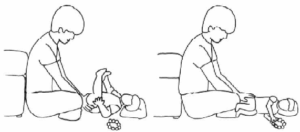/Our services (A to Z)/Physiotherapy (ICAN)/Developing your child’s movement skills: Lying on their back
Activities to develop lying on the back (supine)
Ideas and advice for parents and carers
General information
- Movement skills learned in lying are the building blocks of more complex movements such as sitting, standing and walking.
- Use only the positions your child is ready to use.
- A “little and often” approach works well for harder positions such as tummy-lying, but make sure your child has plenty of time in between where they are lying in an easier position.
- Use activities and toys which are appropriate for your child’s developmental age.
Younger babies like black and white or contrasting colours, mirrors, faces and rattles.


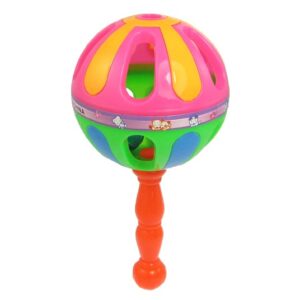
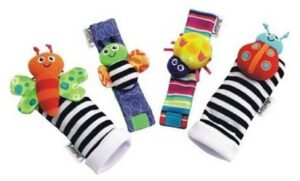



Note: Older babies like noisy toys, light and sound toys and rattles.
Supine (lying on the back)
- The first position children learn to control is lying on their back.
- This is important because your child has a lot of support while they learn to move their head, arms and legs and develop more co-ordinated movements.
- As your child learns to lift their head, arms and legs up, they are developing their muscle control.
Sequence
- Head to midline
- Hands to midline
- Lifting arms
- Lifting legs
- Lifting arms and legs together
Early development
Head and hands to midline
Head and hands to midline
Position
- Reclined lying (picture)
- Support head and shoulders on pillow
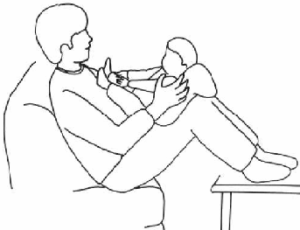
Encourage
- Head in middle
- Arms forward
- Hands together
Play ideas
- Toys and people in midline
- Watching toys move side to side
- Bracelets or toys on child’s feet or hands
- Eye contact or interaction: Making faces, singing or clapping
Lifting arms or legs
Lifting arms or legs
Position
- Rolled up towel under shoulders or head to bring shoulders forward
- Rolled up towel under knees

Encourage
- Head turning to each side
- Lifting arms and legs from floor
- Kicking legs or reaching for knees (see picture).
Play ideas
- Reaching for toys above and to sides.
- Play gym with hands and feet.
- Toys or bright socks on feet.
Lifting arms and legs together
Lifting arms and legs together
Position
- Body flat on floor, pillow under head if required
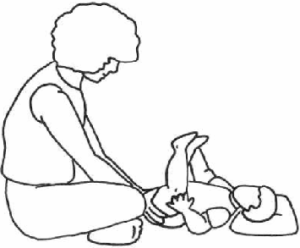
Encourage
- Lifting head from floor
- Head turning to each side
- Kicking legs or reaching for feet
- Lifting bottom up from floor (see picture)
Play ideas
- Reaching for toys
- Play gym
- Toys or bright socks on feet
Songs
- “This little piggy”
- “Head, shoulders, knees and toes”
- “Wind a bobbin” (with hands or feet)
Side-lying
Side-lying
- Side-lying helps your child to bring their arms and legs together.
- They may find it easier to focus on and play with toys in midline.
- It helps your child feel the movements needed for learning to roll.
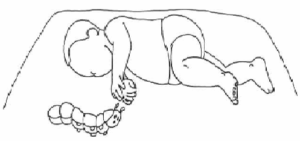
Position
- Small cushion under top knee to support leg
Encourage
- Shoulders forwards
- Hands together
- Bend top leg to help balance
- Place bottom leg straighter
Play ideas
- Toys in both hands
- Rattles, bells
- Dangle toys from above
- Mirror
Rolling
Rolling
Rolling front to back often comes before back to front
- Support your child at the hips.
- Slowly guide your child over to one side from their hips.
- Help them move their arm so it isn’t stuck under them.
Rolling back to front
- Elbow tucked in to side in the direction they will roll.
- Place toys to that side to encourage head turn.
- Hold child’s opposite leg with the hip and knee bent and slowly guide on to their side. Give your child time to join in.
- Continue guiding them on to their tummy. You may need to give a little lift at the shoulder they are lying on to help them roll all the way.
